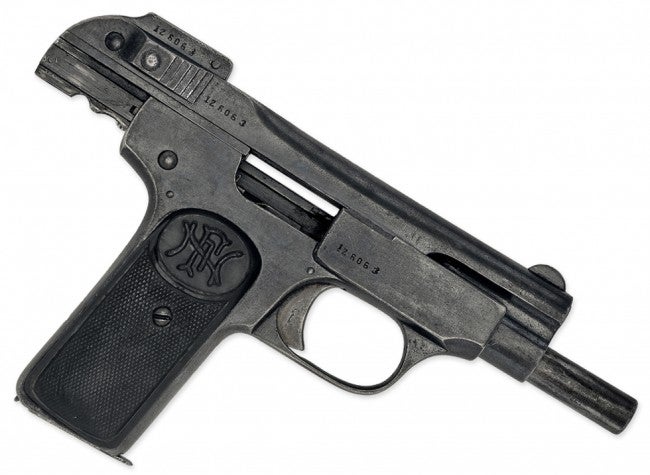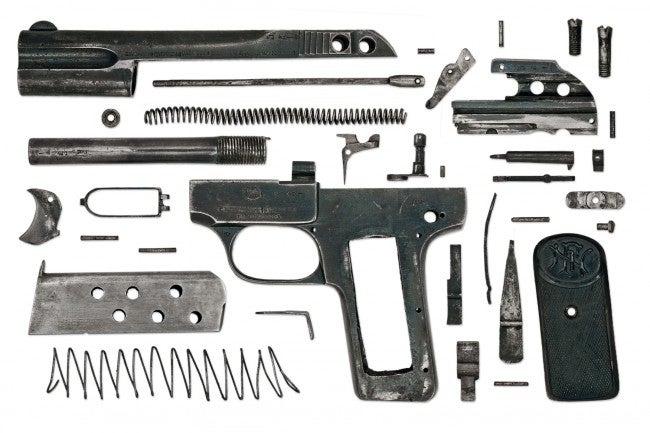Browning’s Model 1900 pistol was an icon and reasonably simple to manufacture. So when soldiers went looking for pistols in China, this one was an obvious choice.
John Browning introduced the first slide operated handgun through Fabrique Nationale d’Herstal in Belgium. Originally known as the “Browning Pistol,” its widespread popularity made his name practically synonymous with semi-automatic pistols in many parts of the world.
Browning made his pistol easy to produce with simple machine operations. This, combined with its reputation, made it especially popular in martial China. Small workshops were able to create clones of the gun with simple tools and inferior metals. Obviously these did not hold up as well as an original and discerning Chinese buyers would be put off by native production. So many of the small arsenals and workshops attempted to emulate the English and French markings on the guns with limited success. Our example here was marked with stamps attempting to emulate “Browning’s Patent” and “Fabrique-Nationale-D’armesdeGuerre Herstal-Belgique” but instead display “Browning’s Nationale” and “d’armesde d’armesde d’armesde d’armesde,” with a few upside down for good measure. The safety would normally be marked FEU (fire) and SUR (on, or safe) but in this case it’s be simplified to EEU and EEU.
These copies vary in size, weight, quality, and general configuration. Interestingly, an apparent majority of them (again somewhat varied) display the same serial number: 126063. It appears the 1 might have been damaged or lost, as some have been found with the serial 26063. M1900 copies are almost always chambered in the same .32ACP cartridge and are better off left in the display case. They should not be fired as the springs, fittings, and overall metal used for production cannot be considered reliable. The broad majority don’t seem to have much a provision for a rear sight anyway.
While the unlicensed Chinese M1900 copies are among the worst guns mass produced, they did serve from the Chinese Warlord Era through WWII and the Chinese Civil War. This makes them quite collectable and they offer a unique, “hand-crafted” piece for C&R collectors.
 Your Privacy Choices
Your Privacy Choices



